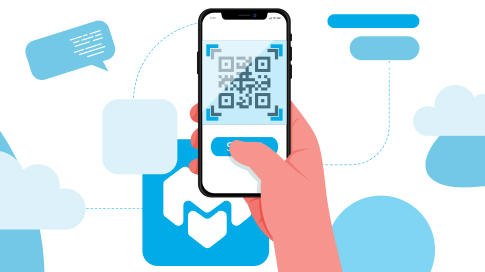Building A Brand Online: Essential Design Elements
Crafting a compelling online presence for your brand is more crucial than ever. Your digital footprint serves as the first impression many customers will have, so it’s essential to get it right. Every element is pivotal in building trust and loyalty, from consistent branding to engaging content and responsive design. This guide explores ten key design elements that can help effortlessly elevate your brand’s online image. Whether you’re just starting or looking to refine your existing strategy, these tips will provide valuable insights to make your brand stand out in the crowded digital marketplace.
10 Essential Design Elements of Building Your Brand Online
1. Consistent Branding
Maintaining consistent branding involves standardizing visual elements like your logo, color scheme, and typography to create a cohesive look. When people repeatedly see these elements, they associate them with your brand’s identity. Consistency also extends to your tone of voice in communications—whether on social media, emails, or advertisements. This uniformity helps strengthen your brand’s image and ensures that customers’ interactions with you feel familiar and dependable. Robust and consistent branding in the crowded digital marketplace can set you apart from competitors.
2. User-Friendly Website
Creating a user-friendly website is essential for keeping visitors engaged and turning them loyal customers. Start with intuitive navigation that allows users to find what they’re looking for without frustration. Clean design and clear fonts make your content easy to read, while fast loading times prevent potential buyers from clicking away out of impatience.
Don’t forget mobile responsiveness; most browsing happens on smartphones. Simple elements like prominent contact info frequently asked questions (FAQs), and an easy checkout process can significantly enhance the overall user experience on your site.
3. Call-to-Actions (CTAs)
Call-to-Actions, or CTAs, are pivotal in guiding website visitors toward desirable actions, like purchasing or signing up for a newsletter. Effective CTAs are clear, concise, and compelling. Use persuasive language that creates urgency.
For example, instead of saying “Buy Now,” try “Get Your Custom Print Hoodie Today!” This tells the visitor what to do and adds an element of excitement. Strategically place these CTAs throughout your site to engage users at different journey stages.
4. Responsive Design

In today’s digital age, your website must perform flawlessly on all devices. Responsive design ensures that your site adapts seamlessly, whether viewed on a smartphone, tablet, or desktop computer. This isn’t just about aesthetics; it’s also about functionality.
A responsive site provides an optimal user experience by adjusting images, text sizes, and navigation based on the device used. This can lead to higher engagement rates and lower bounce rates because visitors won’t have to struggle with awkward layouts or zooming in.
5. Engaging Content
Creating engaging content is more than just sharing information; it’s about connecting with your audience on a deeper level. Storytelling can bring your brand to life, giving it personality and relatability. High-quality visuals can also make content more appealing and shareable.
Interactive elements, such as polls or quizzes, encourage participation and keep visitors on your site longer.
Regularly updating your blog or social media channels with fresh content ensures that followers remain interested and engaged. Remember, the goal is to provide value – whether through entertainment, education, or inspiration – that keeps your audience coming back.
6. High-Quality Visuals
High-quality visuals are a cornerstone of compelling online branding. Eye-catching images and professional graphics draw users in and make your content more memorable. Investing in high-resolution photos or custom illustrations can set you apart from your competitors.
Videos and infographics also add depth, making complex information easily digestible. Consistency in visual style across your channels reinforces brand identity. Visually appealing content enhances user experience and fosters stronger emotional connections.
7. Social Media Integration
Integrating social media into your online presence is vital for building a dynamic and engaged community around your brand. Start by adding social media buttons to your website, enabling visitors to follow your profiles easily. Shareable content like blog articles or product launches encourages users to spread the word amongst their networks.
Additionally, embedding live social media feeds on your site keeps it fresh and engaging with real-time updates. You can also leverage user-generated content by encouraging customers to share their experiences with your brand using specific hashtags.
8. SEO Optimization

Optimizing your website for search engines is essential to increase visibility and attract organic traffic. Start by researching keywords to understand what terms your audience is searching for. Incorporate these keywords naturally into your content, titles, and meta descriptions. High-quality content that provides real value to users will also rank better.
Don’t neglect technical SEO aspects like site speed, mobile-friendliness, and secure connections (HTTPS). Building backlinks from reputable sites can further boost your credibility in search engine algorithms. Regularly updating your content ensures it remains relevant.
9. Customer Testimonials & Reviews
Customer testimonials and reviews provide social proof that reassures potential customers about the quality of your products or services. Displaying genuine feedback on your website and social media channels can significantly influence purchasing decisions.
Consider featuring both written testimonials and video reviews for a more personal touch. Make the process simple to encourage satisfied customers to leave reviews. Responding to reviews shows that you value customer feedback and are committed to continuous improvement, further strengthening your brand’s reputation.
10. Analytics Tools Utilization
Utilizing analytics tools is crucial for understanding your audience and optimizing your online strategy. Platforms like Google Analytics offer valuable insights into user behavior, traffic sources, and conversion rates. By analyzing this data, you can identify which aspects of your site are performing well and which areas need improvement.
Understanding metrics allows you to tailor content and design more effectively. Regularly reviewing these analytics helps you make informed decisions that drive growth. Leveraging data-driven strategies ensures you meet your audience’s needs efficiently and effectively.
These Design Elements Will Help You Build Your Brand
As you build or refine your online brand, remember that every element counts. Take the time to apply these essential design principles thoughtfully and consistently across all your digital platforms. Doing so will enhance your brand’s credibility and foster stronger connections with your audience. Don’t wait – start implementing these strategies today.




Leave a Reply